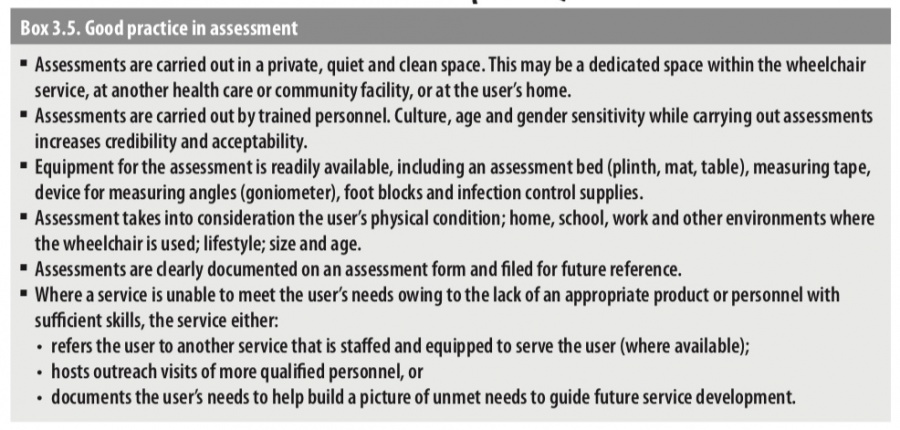Wheelchair Assessment
Original Editor - Your name will be added here if you created the original content for this page.
Top Contributors - Naomi O'Reilly, Kim Jackson, Rucha Gadgil, Simisola Ajeyalemi, Amrita Patro and Olajumoke Ogunleye
Introduction[edit | edit source]
Assessment is the second wheelchair service step. Information collected from the assessment will help the wheelchair service personnel and wheelchair user to; choose the most appropriate wheelchair from those available; determine the most appropriate wheelchair components from those available including any possible additional postural support required and decide what training or support the wheelchair user family member/caregiver may need to use and maintain their wheelchair. Assessments should always be carried out in a clean, quiet space, which may be a space within the wheelchair service, at another health care or community facility, or at the user’s home. If it is necessary to check whether a person has a pressure sore, do this in a private space. Respect the dignity and privacy of the wheelchair user irrespective of their age, gender, religion or socioeconomic status.
The wheelchair assessment process should incorporate the following two parts:
- The first part of the wheelchair assessment is the assessment interview. During this part of the assessment the wheelchair service personnel gather information about the wheelchair user, which will help to identify the most appropriate wheelchair for the wheelchair user. Read More
Good Practice[edit | edit source]
Resources[edit | edit source]
References[edit | edit source]
- ↑ William Armstrong, Johan Borg, Marc Krizack, Alida Lindsley, Kylie Mines, Jon Pearlman, Kim Reisinger, Sarah Sheldon. Guidelines on the Provision of Manual Wheelchairs in Less Resourced Settings. World Health Organization; Geneva: 2008.







